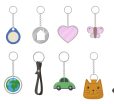Do you know 80% of customers consider customer experience to be as crucial as the product/service itself? No wonder, customer experience is not a luxury, but a necessity.
But the real question is how do you cater to an audience which comes from such vast interests? Well, the answer lies in Customer Segmentation!
For beginners, customer segmentation is all about segregating the audience into separate groups for better targeting. This can be based on various factors like buying features, industry types, age, and needs.
Different types of segmentation are suitable for different businesses based on their target audience. For example, if used correctly, for e-commerce, customer segmentation can do real wonders. Similarly, a brick-and-mortar business can achieve results much faster if it segments its audience in the right manner.
In this article, we will talk about four common ways brands segment their customers.
Geographic Segmentation:
Geographic segmentation consists of grouping potential customers by region, state, country, market size, or climate. All that you need to do is to tailor your message as per geographic segments.
Porsche is a great brand that deeply follows this type of segmentation strategy. For example, they provide a higher range of convertibles for their product mix in the southwest than North America as the temperature difference is huge between both regions.
Similarly, you can also provide excellent value to your client by modifying your marketing strategies based on your audiences.
Demographic Segmentation:
The next most common type of segmentation is Demographic segmentation. Here you divide customers based on demographics and prepare strategies for them accordingly.
A few parameters that can be considered here are:
- occupation
- gender
- age
- generation
- education
- marital status
- ethnicity
- income plus many more.
The best part is, it is quite easy to measure and acquire data for demographic segmentation as compared to any other customer segmentation type. The simplest way for gathering data is to speak to your clients or email the subscribers asking for filling the form consisting of all questions required by the researcher to carry out segmentation.
Demographic segmentation can segregate clients and analyze buying behavior for creating a range of products that are profitable for business and audience, both.
Behavioral Segmentation:
Behavioral segmentation consists of segmenting clients based upon their interaction with a brand.
One way to do this is, for example, you can segment your customers based on who has added products in their carts but did not checkout. And not just that, you can also segment the group of people who didn’t add any products to their cart but are just browsing. Here you can group your services or products they showed interest in and approach them with an offer they can’t deny.
Few common variables that can help to determine behavior segmentation include:
- Usage: segmentation here is based on purchase frequency.
- Occasion: segmentation process is based on purchases made on a specific event like Halloween, weddings, or Christmas.
- Thought Process: segmentation here is based upon driving forces behind the purchase.
Personalized marketing is a great way to convert those prospects into customers who showed a lack of behavior, such as an abandoned cart or incomplete survey.
Lifecycle Segmentation:
Apart from knowing the buyer’s interests and preferences, you also need to know the buying process. This type of customer segmentation is known as customer journey or lifecycle-based segmentation.
Below are some of the segments you can create here
- People who have already visited the online store but did not make any purchase.
- People who make purchases just once a year. You can convince them for frequent purchases.
- People who haven’t made any purchase in the last year.
Lifecycle segmentation allows you to have a powerful approach for targeting your customers with valuable and relevant recommendations. It relates to clients’ journeys which are behind their thought processes while selecting any products or services.
Lastly, no one size fits all! Segmentation can help in making desired marketing strategies based on what your audience wants to hear. It will help you craft the right plan to allow your brand to rank higher.





























All Comments
zoritoler imol
It?¦s really a great and useful piece of info. I am happy that you shared this helpful information with us. Please stay us up to date like this. Thank you for sharing.